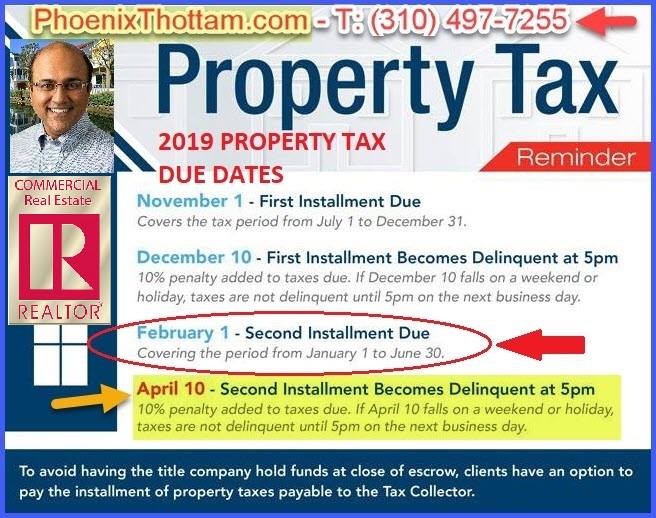
PROPERTY TAXES, PROP 13 ‘BASIS’
TRANSFER & INHERITANCE
As a broker, I’m often asked about Proposition 13 and ‘inheritance’-tax basis transfer issues. Proposition 13 (also known as the “People’s Initiative to Limit Property Taxation”) was a 1978 voter initiative enacted amendment of the Constitution of California. The initiative was approved by California voters on June 6, 1978. It was declared constitutional by the United States Supreme Court in the case of Nordlinger v. Hahn, 505 U.S. 1 (1992).
Proposition 13 is embodied in Article XIII A of the Constitution of the State of California. The most significant portion of the act is the first paragraph, which limited the tax rate for real estate: Speicifcally “Section 1. (a) The maximum amount of any ad valorem tax on real property shall not exceed one percent (1%) of the full cash value of such property. The one percent (1%) tax to be collected by the counties and apportioned according to law to the districts within the counties.” The proposition decreased parcel property tax assesments by only assessing values at their 1976 value and restricted annual increases of assessed value of real property to an inflation factor, not to exceed 2 percent per year. It also prohibited reassessment of a new base year value except in cases of (a) change in ownership, or (b) completion of new construction. These rules apply equally to all real estate, residential and commercial—whether owned by individuals or corporations. People often ask me how a commercial or residential property owner can avoid is how property owners can transfer their home to their children or grandchildren without losing “the Proposition 13.” All property in California is under Proposition 13’s protection, but what these homeowners are asking is how to transfer their property to their kids or grandkids while keeping the property tax assessment the same as if they continued to own the home themselves.
Under Proposition 58, passed overwhelmingly by voters in 1986, property owners may transfer a home that is their primary residence to their children, and if the proper paperwork is filed within the required time limits, the property will continue to be assessed at the established Proposition 13–factored base-year value, instead of being reassessed to market value on the date of the change of ownership.
In addition to their primary residence, parents may transfer up to $1 million of other real estate to their children, and that transferred property will also be excluded from reassessment. The $1 million exclusion applies separately to each eligible transferor, so if two parents are transferring real estate they own jointly, the total exclusion is $2 million. That’s based on the adjusted base-year value, not the current market value. There is no value limit on the primary residence.
To claim the exclusion from reassessment for a transfer between parent and child, file Form BOE-58-AH, which is available from the office or website of your county assessor. A list of county assessors’ offices can be found on the website of the state Board of Equalization (BOE) at this link: www.boe.ca.gov/proptaxes/countycontacts.htm.
Under Proposition 193, passed by voters in 1996, an exclusion from reassessment is available for a transfer of property between grandparents and grandchildren in some circumstances. To claim the exclusion, file Form BOE-58-G.
Generally, the claim form must be filed within three years of the date of the transfer in order to receive the exclusion as of the date of the transfer. You can still file the form if the three-year deadline has passed, but the tax relief will begin with the current year instead of being retroactive.
It doesn’t matter whether the property is in a trust or not, and the exclusion from reassessment is available whether the transfer results from a sale, gift or inheritance. Transfers of property between parents and children can go in either direction — children may transfer property to their parents and claim the same exclusions from reassessment. For grandparent-grandchild transfers, though, it’s one-way only.
There is no exclusion from reassessment for transfers between siblings. For example, if a property is inherited by two brothers and one buys out the other, the percentage of the property that was purchased from the sibling is subject to reassessment at market value.
In the case of grandparent-grandchild transfers, the exclusion from reassessment may only be claimed if the parents of the grandchildren are deceased. It is not possible for the parents to file a disclaimer to make the grandchildren eligible for the grandparent-grandchild exclusion. According to the Board of Equalization’s website, “Even though a disclaimer means the person filing the disclaimer is treated as predeceased, this does not make the person dead as required by the California Constitution.”
Benjamin Franklin said nothing in life is certain except death and taxes, and California has its own rules about both. It is always advisable to consult an attorney and an accountant before transferring property.
You can obtain more information about Proposition 58 and 193 transfers on the website of the Board of Equalization at this link: www.boe.ca.gov/proptaxes/faqs/propositions58.htm, or call the BOE’s Assessment Services Unit at 916-274-3350.

